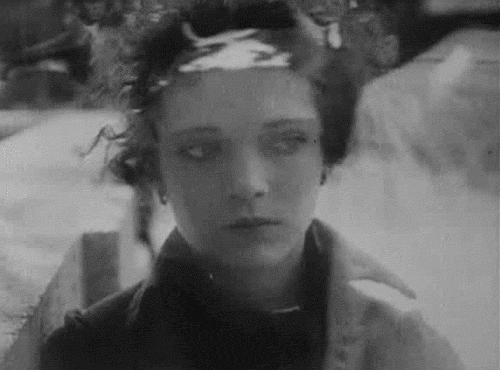
‘Dimitri Kirsanoff’s Ménilmontant remains one of the most celebrated and moving of French avant-garde impressionist films of the 1920s. It is still frequently screened in museums, art-house cinemas, and festivals around the world, and its growing circle of admirers has included mainstream American critic Pauline Kael, who called it “an exquisite, poetic 40-minute movie that is one of the least-known masterpieces of the screen.” A harbinger of the poetic-realist French cinema of the 30s, it also announced the city symphonies. In his 1957 obituary of the director, Walter S. Michel wrote in Film Culture: “Dimitri Kirsanoff was a poet who chose the cinema as his medium of expression and gave us Ménilmontant, Brumes d’automne and Rapt, three of the most beautiful and intelligent films in the history of the cinema.” Dudley Andrew hailed it as “a personal triumph of art over industry.” “Industry,” however, was quick to exact its revenge, as Kirsanoff’s career became one of the most blighted in cinema history. Deprived of true creative freedom in the early sound period, he was reduced to soul-crushing hack work, apart from Rapt.
‘Even in his heyday, Kirsanoff gave few interviews and was guarded about his origins and formative years. (He did not hide his film tastes: he trashed Eisenstein’s Potemkin as cheaply manipulative, praised the humanism of Pudovkin, and worshipped Von Stroheim.) Thanks to the research of Dirk Hoyer, a German filmmaker and lecturer at Tallinn University’s Baltic Film, Media, Arts and Communications School, we now have more exact information on his background: neither Slav nor White Russian, and even less so a member of the Russian aristocracy, he was born Markus David Kaplan in Tartu, Estonia, in 1899, into a Lithuanian Jewish family who had come to Estonia in the 1870s; his father was murdered by the Bolsheviks in 1919. Emigrating to France the following year, he adopted the name Dimitri Kirsanoff, in homage to a character in Turgenev’s Fathers and Sons. He studied music under Pablo Casals at the newly founded École Normale de Musique and played the cello in the orchestras of various Paris cinemas (his exact contemporary and fellow cinéaste maudit, Jean Grémillon, was accompanying films on the violin).
‘Kirsanoff soon found a muse and helpmate in Geneviève Lebas, a diminutive blue-eyed Breton who had come to Paris intent on breaking into the movies. Following Kirsanoff’s example, she adopted a Russian name, Nadia Sibirskaia. Together these two false Russians embarked on a collaboration that would leave a brief but indelible mark on French independent cinema.
‘Kirsanoff’s first film in 1921, self-financed, was L’Ironie du destin, a two-hander about two aged outcasts who meet on a park bench and evoke their failed lives, only to realize they have known one another in earlier times. Kirsanoff and Sibirskaia played the leads, and the film was shot mostly in natural locations. Despite its technical deficiencies, it found favor with more enlightened film journalists (notably Léon Moussinac, who championed it in the pages of L’Humanité), and Sibirskaia was singled out for her portrayal of a woman from adolescence to old age. Now considered lost, L’Ironie du destin was also the first French film without intertitles. Kirsanoff struggled to find commercial distribution, and it had only the briefest of releases.
‘Encouraged nonetheless by his first real contact with the filmmaking process, Kirsanoff began Ménilmontant (originally entitled Les Cent pas) during the winter of 1924-25, with Sibirskaia again in the lead. The lurid story, which runs a mere 40 minutes and contains no intertitles, concerns two orphaned sisters who move to Paris and are preyed upon by a young Lothario who leaves one of them with a child and drives the other to prostitution.
‘Kirsanoff appropriated a palette of avant-garde techniques to tell a story that progresses with haunting elliptical momentum. “There are sequences of violence in rapid montage, of dreamlike multiple superimpositions and lap dissolves (all done in camera), of documentarylike impressions…, of classical continuity editing…”. Though Kirsanoff had the collaboration of an elderly, extraordinary professional cameraman, he claimed to have done the hand-held camerawork himself.
‘Influential critic Jean Tedesco selected Ménilmontant to open the second season of his repertory cinema at the Théâtre du Vieux Colombier in Feb. 1926 (on a double bill with Chaplin’s The Pilgrim). It was an immediate success, and was brought back regularly by popular demand. The film was a personal triumph for Sibirskaia, whose heartbreaking performance as the seduced-and-abandoned younger sister had critics comparing her to Gish and Nazimova (there is a touch of Griffith to the scenes between the two sisters). The scene on the park bench, in which a vagabond shares a hard-earned piece of bread with the starving young mother, is one of the most wrenching scenes of pathos in silent cinema.
‘Unfortunately, a local commercial distributor, thinking to make a box-office killing, reissued the film in early 1928, “improving” it with the addition of numerous intertitles commissioned from a professional playwright. Cinémagazine protested: “Some may have been necessary, but they’ve added much too many, and any old how.”
‘Success, however, did not become Kirsanoff. His next two films, Destin and Sables, compromised by commercial demands, failed to repeat the miracle of Ménilmontant, and his haunting short mood piece, Brumes d’automne (1928), was lost in the rush of the talkies. Kirsanoff found work at the failing Paramount studios outside Paris, but clashed with studio bosses over what were considered his avant-garde tics and was removed from a film, which was re-shot by another director. His last bid for acceptance, Rapt (1934), an ambitious adaptation of a Swiss literary classic by Ramuz, was a resounding commercial failure. He died in 1957, totally forgotten.’ — Lenny Borger

___
Stills
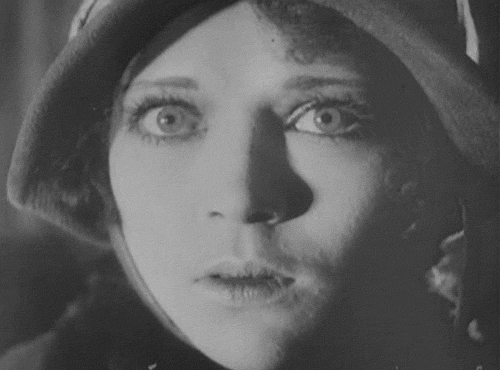
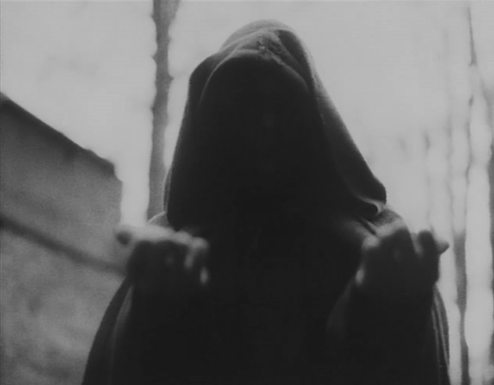
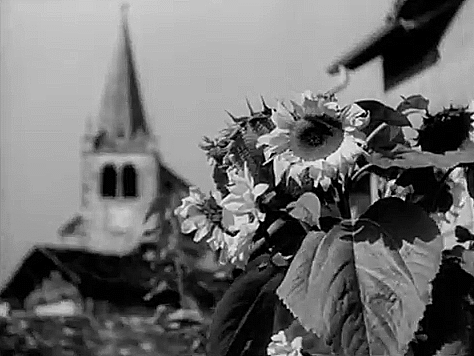

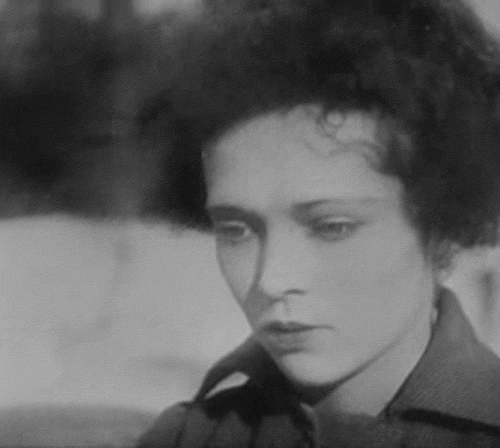
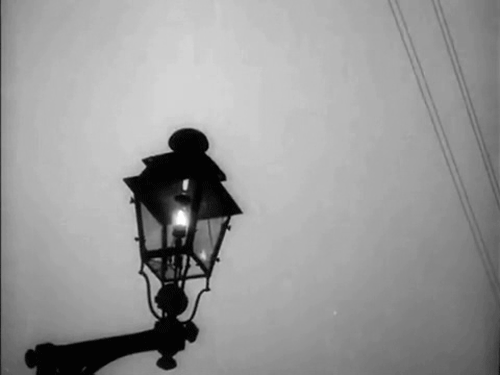
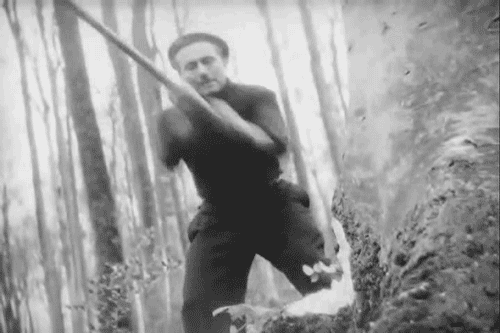
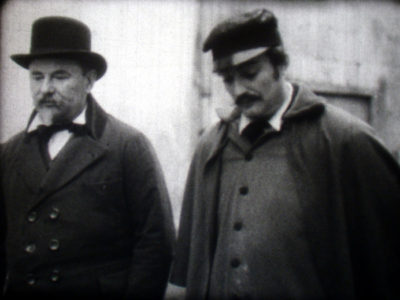

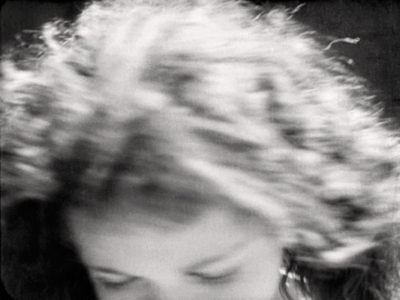
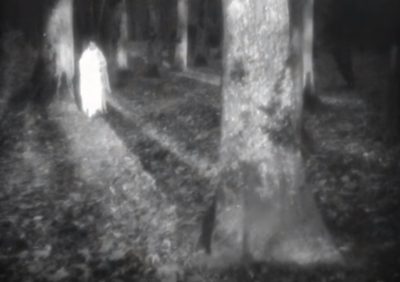
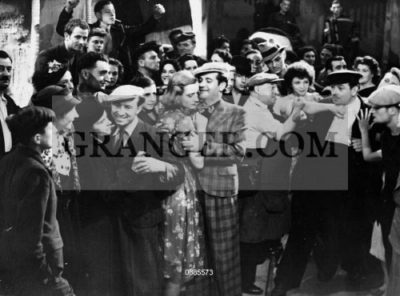
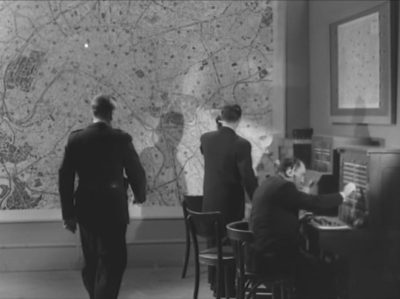
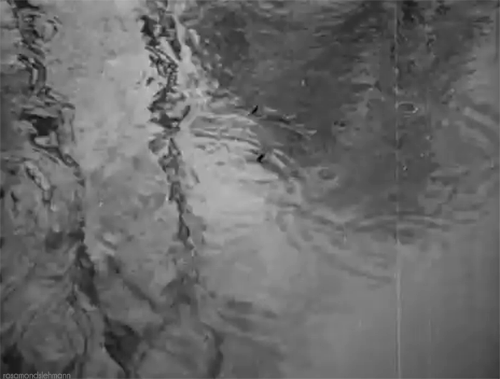

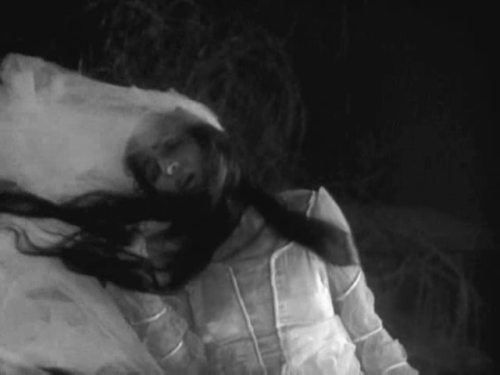
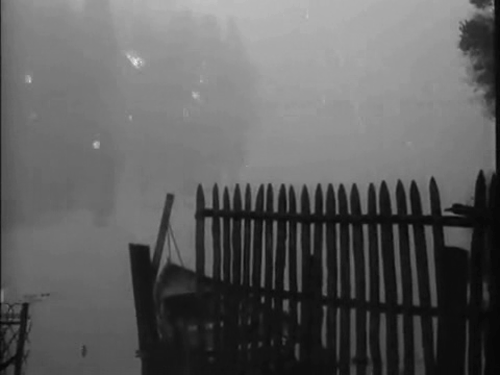


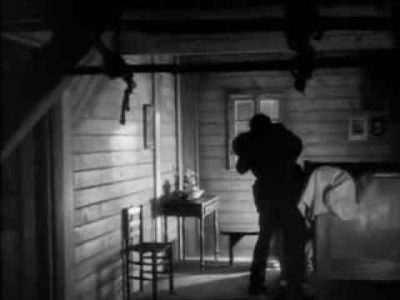



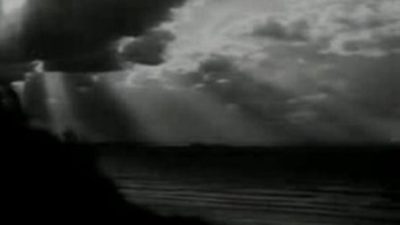
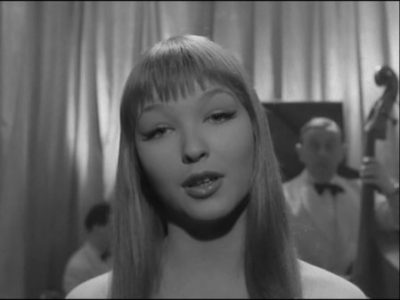

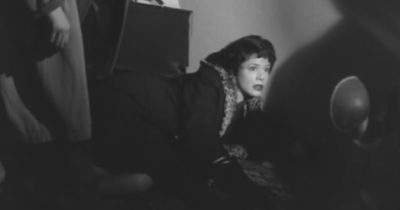

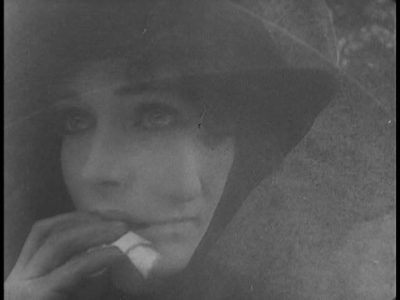

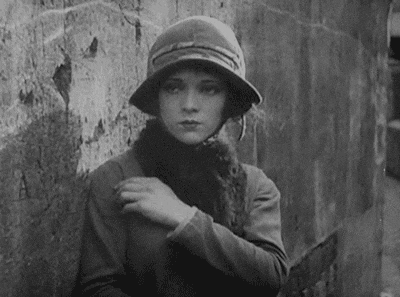

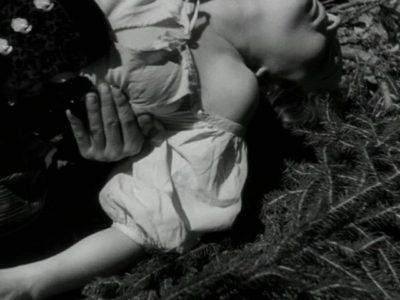
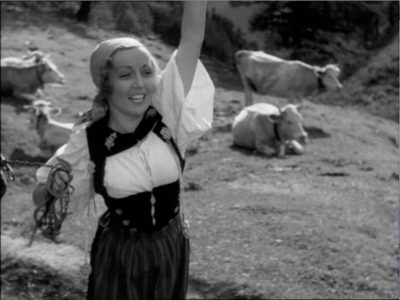
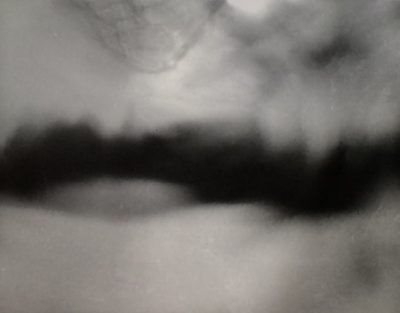
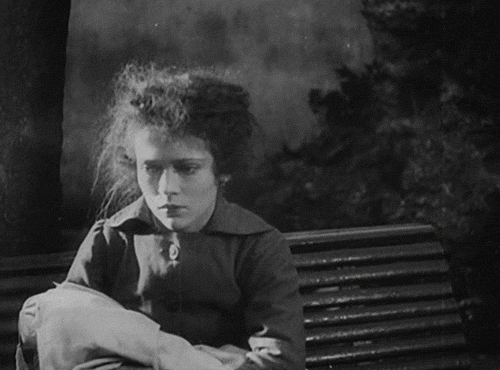
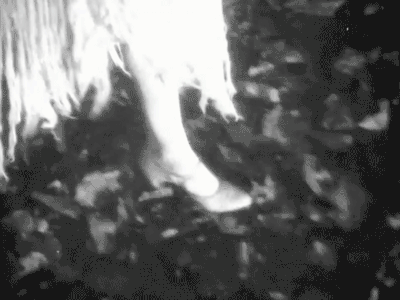

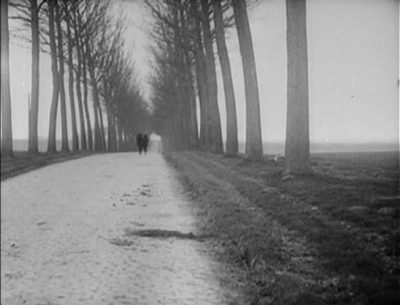
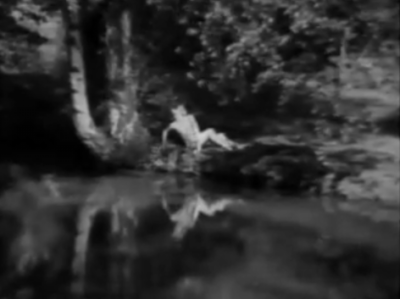
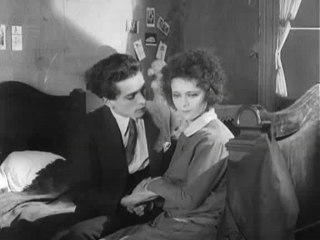

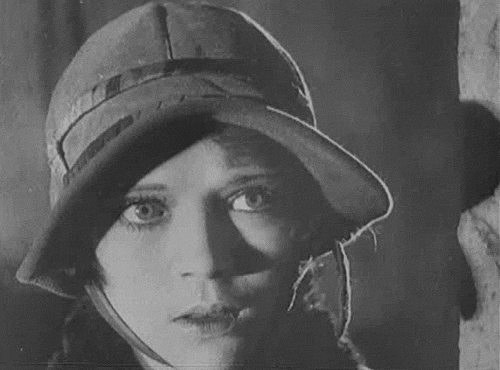
___
Further
Dimitri Kirsanoff @ Wikipedia
Dimitri Kirsanoff @ IMDb
Dimitri Kirsanoff: The Elusive Estonian
L’oeuvre singulière de Dimitri Kirsanoff
Dimitri Kirsanoff @ MUBI
Dimitri Kirsanoff @ Letterboxd
Toward a History of French Ecocinema: Nature in Dimitri Kirsanoff’s Modernity
Dimitri Kirsanoff @ Criterion Forum
Films I Love #4: Ménilmontant (Dimitri Kirsanoff, 1926)
___
Extras
DIMITRI KIRSANOFF – DIRECTOR
Kirsanoff/Bresson: The Axe Murders
___________
Avant-Garde Paris
by Monica Nolan

In 1921 when Dimitri Kirsanoff was shooting his first film in Paris and Man Ray had just arrived there, the city wasthere, the city was the site of an aesthetic revolution. Artists were discarding painting in favor of assemblages and “readymades” like Duchamps’s famous urinal. Surrealists swapped narrative fiction for experiments in automatic writing. The composers of Les Six rejected Wagner for Gershwin. It was a heady atmosphere for the émigré artists then flooding Paris, whether leaving behind the turmoil of eastern Europe like Kirsanoff or the conservatism of middle-class America like Man Ray. The world that had produced the devastating Great War clearly needed drastic revision, and the avant-garde artists were up to the task.
The newest of these new art forms was avant-garde film. “An unforeseen art has come into being,” wrote Jean Epstein in 1921. “We must understand what it means.” In fact, avant-garde films were then defined less by their aesthetics than by their precarious position on the margins of commercial cinema. As they struggled to gain recognition, avant-garde filmmakers and their allies inadvertently fueled the explosive growth of a film culture we take for granted today: film coverage in daily newspapers, film magazines, cinema clubs, lecture series, museum exhibitions, repertory screenings, and art house cinemas. Today’s Castro audiences are the descendants of the cinephiles who pored over Ciné pour tous (founded 1919) and flocked to the screenings organized by the Club des amis du septième art (CASA, founded 1920).
It was through CASA that Kirsanoff’s first film, L’Ironie du destin (believed lost), finally reached a sympathetic audience. Completed in 1922, the film tells the story of an old man and woman who meet on a park bench and exchange memories of their lost loves. It languished without distribution for almost two years and then caught the eye of Jean Tedesco when CASA programmed it as part of its regular screenings at a dance studio. A former editor of a women’s magazine, Tedesco had recently merged two film publications to create the definitive voice of the art cinema world, Cinéa-Ciné pour tous. However, he had bigger ambitions; seeing the success of the CASA screenings, he began to dream of a theater with full-time avant-garde programming.
Meanwhile, Kirsanoff was forging ahead with his second film, made, like the bulk of his work, outside commercial cinema on a tight budget. Little is known about Kirsanoff, who was born Mark David Kaplan in Riga, Latvia, according to some sources, or Dorpat, Estonia, according to others. He may or may not have played the cello in the Ciné-Max-Linder orchestra; he may or may not have played the violin in some of the Russian cabarets then popular in Paris. He did compare a film to a symphony in a 1929 Cinéa-Ciné pour tous interview, adding, “it’s wrong to say that images are words. They are notes or rather harmonies.” In the same interview he disparaged film adaptations of books and called intertitles the “bête-noire” of French cinema.
In fact, like his first film, Ménilmontant has no intertitles. The uninterrupted flow of images is only one reason for the film’s decidedly modern feel. Kirsanoff takes a melodramatic story of orphaned sisters seduced and abandoned in the poor, eastern Paris neighborhood that gives the film its name and turns it into something fresh and exciting. His technical virtuosity is on display in the stunning opening montage, a murderous sequence worthy of Hitchcock, and in the effective use of jump cuts thirty-odd years before Godard and the French New Wave. Kirsanoff’s accomplishment is all the more impressive considering that the atmospheric superimpositions and dissolves were done in camera.
In addition to technique, the film’s other strength is Kirsanoff’s wife Nadia Sibirskaïa in the lead role as the younger sister. His constant and close collaborator (she claimed in a late life interview that she even filled in as director when Kirsanoff was ill), Sibirskaïa—who was born Germaine Lebas in Brittany—is a subtle, naturalistic actress, with eyes large and expressive enough to rival Lillian Gish’s. She is a mesmerizing film presence, whether reacting in horror to the death of her parents or waiting on a deserted street for her faithless lover.
Jean Tedesco programmed Ménilmontant to open the second season of his newly established art cinema, the Vieux-Colombier, in January 1926, and the film was an instant success with the art-house crowd. Historian Richard Abel wrote in French Cinema: The First Wave that the film “helped assure the success of the Vieux-Colombier and soon became a major film on the ciné club and specialized cinema circuit.”
In the fall of that same year, Man Ray’s surrealist short Emak-Bakia also premiered at the Vieux-Colombier. Born Emmanuel Radnitzky in Philadelphia, Ray was as reluctant a filmmaker as Kirsanoff was determined. He supported himself with photography but considered his paintings and assemblages his real art. Ray had only begun to dabble in film when domineering dadaist poet Tristan Tzara commanded him to produce a film for a soiree of contemporary art in 1923. Then in his dada period, Ray obeyed and Retour à la raison (Return to Reason) was the result. He cobbled together random footage he had shot, augmented it with his “rayograph” technique, which involved placing three-dimensional objects on light-sensitive material and exposing them. He had never tried the technique on film, but, pressed for time, he scattered thumbtacks over strips of film and developed them. The film broke twice during the projection (Ray didn’t know enough to edit with cement and not glue) and the evening degenerated into a brawl between dadaists and surrealists, but the thumbtacks danced on-screen and the technique has stayed in the experimental filmmaker’s toolbox ever since.
The man behind Emak-Bakia was Arthur Wheeler, an American stockbroker on vacation in Biarritz. Impressed with Ray’s photography, Wheeler offered to bankroll a film and was shocked when Ray insisted that all he needed was ten thousand dollars (half of which Ray used to buy a new camera). The film was shot in part at the Wheeler villa, which gave the film its name (a Basque phrase usually translated as “leave me alone”). “I drove down and lived luxuriously for a few weeks,” Ray wrote in his autobiography, “shooting whatever seemed interesting to me, working not more than an hour or two every day.” Whereas Kirsanoff’s bleak winter shoot is evident in his actors’ frosty breath, Emak-Bakia radiates the sun-drenched pleasures of the Basque coast.
Like Ménilmontant, Emak-Bakia is a catalog of film techniques. Ray reused the rayograph footage from Return to Reason, created abstract shots with distorting mirrors and spinning objects, and mixed stop-motion with live action—Jacques Rigaut, “the dandy of the dadas” is the man who sets the shirt collars twirling, and Ray’s lover Kiki, a Montparnasse fixture, is the woman with the painted eyelids in the final shot. When he introduced the film at the Vieux-Colombier that fall, Ray warned the audience, he later wrote, that ”my film was purely optical, made to appeal only to the eyes—there was no story, not even a scenario.”
Ray made one more film, Les Mystères du château de dé (1929), while Kirsanoff plugged away, mixing avant-garde shorts with more commercial features, until his death in 1957. Their films of the 1920s not only share a daring inventiveness but capture a distinct moment in time, when cinema fused with the art world and the possibilities of both seemed unlimited. In January 1922, Henri-Pierre Roché (then living the life that formed the basis for Truffaut’s Jules et Jim) described an evening party: “Marcel Duchamp projected his film experiments and geometric dances on the silvered side of a piece of bathroom glass—the result, expressive and quite fantastic, surely exploitable.
_____________
10 of Dimitri Kirsanoff’s 23 films
_____________
Ménilmontant (1924-25)
‘Menilmontant , the best known and the most impressive film of the Russian émigré cellist, Dimitri Kirsanoff, takes its title from the working-class district of Paris where its drama occurs. This short film is remarkable for the honesty with which it represents seduction, jealousy, and prostitution, and, even more so, for its economical and powerful use of montage to narrate a complex story completely within intertitles.
‘The film opens with an unexplained axe murder, brilliantly conceived in a montage of violent details. The remainder of the film describes the life of the two daughters of the murdered couple, who both fall in love with a Parisian thug; one ends up with a baby and the other becomes a prostitute. In the final moments of the film they are reconciled and return to their first job in a sweatshop, while the thug, unbeknownst to them, is murdered in an obscure brawl, the mystery and violence of which reflect the opening murders.
‘A series of hand-held views of Paris, together with superimpositions, simultaneously propels the story elliptically and gives us insights into the psychology of the two girls. The first such sequence marks the abrupt transition from the country to the city, and conveys in its rhythm the excitement Paris possesses for the two new arrivals. When the sister who eventually will have a baby spends her first night with her lover, another moving camera sequence, superimposed over the other sister, vividly portrays her jealousy, and her fantasy, of her sister’s initiation into the excitements of the city. A gloomier version of the same dynamic camera movement is superimposed over the face of the young mother when she leaves the maternity ward, thinking (as the montage makes perfectly clear) of killing herself and her baby. The final round of this stylistic trope introduces the idea of prostitution and culminates in the meeting of the two sisters.’ — P. Adams Sitney
the entirety
_______________
Brumes d’automne (1929)
‘Brumes d’automne runs to just under twelve minutes but it is one of the most hauntingly beautiful of all films, a succinct cinematic poem that expresses so much about the pain and futility of human existence and leaves you moved to tears by the subtlety of its artistry. This is the most perfect and most eloquent of all the films made by Dimitri Kirsanoff, one of the leading figures in the Film Impressionist movement that was active in France throughout the 1920s. As in his earlier masterpiece, Ménilmontant (1926), Kirsanoff crafts a visual poem of extraordinary power that resonates with human feeling. The bleak autumn landscape evokes the sense of desolation and disillusionment that we all know so well when we reflect on the disappointments in our lives, feelings that are rendered just as effectively in the captivating portraits of the director’s muse Nadia Sibirskaïa.’ — frenchfilms.org
the entirety
_________
Rapt (1934)
‘The cinematic mastery for me is that we don’t just have a gripping story. Everything here is replete with resonance. The man staring out a black window, winds blowing outside and echoed in the empty house during a storm. A bucket overflowing with water by a faucet left running; life that forgets to be mindful of itself, spent aimlessly. Sound had rolled in, but for Kirsanoff this is something to use as a way of sculpting echoes from beyond the walls of the story. Here’s a silent maker who wasn’t about to peter out with sound. The soundtrack is rich and detailed, clearly the result of much work. The effort is to be visual with the whole of the cinematic air.’ — chaos-rampant
the entirety
______________
Les berceaux (1935)
‘Les Berceaux is about the dedicated sailors who venture out into the deepest ocean, and the wives who must await their return. The woman sits in her living room, gently rocking her infant’s cradle as she sings, the movement mimicking the rolling motion of the ocean waves.’ — MUBI
the entirety
______________
Jeune fille au jardin (1936)
‘This is the third of three rare collaborations from the same year between Kirsanoff and Boris Kaufman, dp of Vigo at the time and would later go on to lens 12 Angry Men, all music pieces that would probably have screened before a feature; music videos we would call them now. The element is once more water. No story this time. A pianist begins to play, making a bare tree blossom. A girl in a long white dress dances on a stage before projected images of water that takes a myriad rippling forms. Another image shows her floating on air among clouds. It’s a short piece, avant-garde at the time but wouldn’t look out of place in a video these days, we’ve come so far. Kirsanoff’s element shows through; water, woman, the swirl of form in unison, both water and body. Why he never made more films will remain a mystery, our loss.’ — chaos-rampant
the entirety
_______________
Quartier sans soleil (1939)
‘In Marseille, in an insanitary district condemned to demolition, tragedies are playing out among the inhabitants of these slums who are trying to survive … To save their skin a young couple denounced in revenge to the police is forced to flee … Realized in 1939 during the “Funny War”, the climate of the film does not correspond to the “optimism” of the National Revolution, it could not be released until 1945 …’ — Rene Chateau
Slideshow of film stills
______________
La fontaine d’Aréthuse (1940)
‘“La Fontaine d’Aréthuse” opens with what has been described as a “shimmering wash of sound in the piano, octave leaps in the left hand passing above and below repeated chords in the right,” a tune which apparently suggests the splashing waters of a fountain. The story “told” by the music involves a naked water goddess on the river shore, who is pursued by a hunter, before disappearing into thin air to join her water once again.’ — IMDb
the entirety
______________
Deux amis (1946)
‘Inactive throughout the duration of the Second World War, Dimitri Kirsanoff resumed his filmmaking career with this remarkable short film based on Guy de Maupassant’s 1883 novella Deux amis. A Russian émigré, Kirsanoff came to prominence when he started making experimental films in France in the early 1920s, combining Soviet ideas of montage with the ‘impressionistic’ approach to subjectivity favoured by his avant-garde contemporaries Abel Gance, Germaine Dulac, Jean Epstein and Marcel L’Herbier. During this early period, Kirsanoff garnered acclaim for his dazzling shorts Ménilmontant (1926) and Brumes d’automne (1929). But even though he helmed a number of commercial films – Rapt (1934), La Plus belle fille du monde (1938), Le Crâneur (1955), Miss Catastrophe (1957) – he was for the most part a marginal figure, his most inspired work being low budget experimental productions over which he had complete control.
‘Deux amis is arguably Kirsanoff’s most intimate and humane film, one that succinctly encapsulates the futility of war and the cruelty of existence. It also a meditation on the value of friendship and honour, the two things that most ennoble the human spirit and give meaning to life in a seemingly absurd and barbaric universe. Kirsanoff eschews the technical artifice of his early experimental films in favour of a more coldly realistic approach which emphasises the warmth of the friendship between the two main protagonists. The interiors are drab and confined, the exteriors cold and dreary. The opening shots of a hand reaching for a bird in a cage and dead rats being removed one by one from a platter suggest immediately a hungry, comfortless world in which civilisation is descending into savagery. Then we notice the unremitting sounds of war in the background – shells exploding like a continuous thunderstorm.’ — frenchfilms.org
the entirety
________________
Arrière-saison (1950)
‘A woman waits for her husband, a woodcutter, during long lonely days. She becomes weary and leaves him to live with her sister. He takes the news with a look of resignation, but the next day she returns to wait for him again. This is The Turin Horse, but less depressing, and of course from a female protagonist’s point of view.’ — Asheque_
the entirety
_______________
Le Crâneur (1955)
‘When he started making films in the 1920s, Dimitri Kirsanoff readily earned himself a place amongst the Parisian avant-garde that included Jean Epstein and Abel Gance. His early films – notably Ménilmontant (1926) and Brumes d’automne (1929) – are sublime examples of cinematic expression, but in common with most of his avant-garde contemporaries, Kirsanoff ended up prostituting his talents for commercial cinema – “not to live”, as Abel Gance once famously put it, “but so as not to die.” Le Crâneur was one of Kirsanoff’s last films, made just a few years before his death in 1957. It’s about as formulaic as a French film of this era could be – a classic polar or French film noir – but Kirsanoff’s inventiveness and flair for visual drama ensure that it is far from mundane.
‘Le Crâneur takes a fairly routine plot – of the kind you’ve already seen in over a hundred American films noirs – and gives it an original spin by employing a succession of flashbacks whereby the story is told in three parts from the perspective of the three main characters. This was not the first film to employ this narrative structure – Claude Autant-Lara had used it very succesfully on his recent film Le Bon Dieu sans confession (1953) – but it works well and makes Le Crâneur more involving than it might have been had it gone for the linear approach. It also adds a measure of depth to the three protagonists, who would otherwise struggle to be more than the familiar noir archetypes.’ — frenchfilms.org
the entirety
*
p.s. Hey. ** The Black Prince, Ha ha, thanks. Gosh, I don’t remember what animated film that boy came from. Mm, my memory, perhaps faulty, suggests ‘Jack Frost’? Well, our novella is nothing like ‘Oliver Twink’, for better or worse. It’s about a ventriloquist and her dummy. A piece of it is going to be in that upcoming Infinity Land Press anthology. I think one of Gisele’s and my pieces, and the most giant and spectacle-like of them, ‘This Is How You Will Disappear’, is going to be performed in London at Sadler Wells this fall, barring Covid delays. I might be making a vaccine appointment as early as today if plans pan out. [flash flood heart emoji]. ** David Ehrenstein, Yes, the famous O’Hara typewriter. All respect to ‘Velvet Goldmine’, but that version of ‘Baby’s On Fire’ is a sad shadow of the original. ** Misanthrope, Yes, write the ‘Hogg’ of your generation. We need it. That Les Paul was kind of heavy, it’s true. But what a beaut. I so did not deserve it. Enjoy your Zeros, but not too much. ** TomK, Hi, Tom! Yes, Gisele was a technical advisor on Carax’s ‘Annette’ in its early stages, to do with the puppet, which, curiously, the trailer seems to be trying to keep a secret even though the film is all about the puppet. And, yes, I’m extremely excited for it. ** Bill, Thank you, sir. Yeah, I’m completely over the moon in delirious excitement for the new Joy Williams novel. Wow! Barring the unforeseen, I should have a vax appointment in the next day or so. ** Dominik, Hey!!! Thank you very much about the gif work. No, my right hand is doing little else than deleting files while my left hand does little more than delete endlessly arriving emails telling me my blog has been attempt-hacked for the billionth time. What a life. Love never having watched ‘Queer as Folk’ in his life and thus inviting itself over to your Love’s apartment for a ‘QaF’ viewing with a bottle of champagne and a gram of cocaine in hand, G. ** Billy, Hi, Billy. Happy you came back. Gosh, thanks for the complimentary ‘Malcom’ comparison. My favorite Purdy is ‘Eustace Chisholm’, which will surely come as no surprise. Oh, you know, I do think all this ‘young people today are lifeless internet addicts’ is just nostalgia-fuelled disrespect. I mean, I’m all over the internet all the time, but I read as many books as I ever have. ‘A mind-melting portal to fascism’ … ha ha, that viewpoint would be hilarious if it wasn’t so, well, kind of fascist? You like London? Is it perking up? Writing in one’s diary is as noble a venture as writing a novel in one’s Microsoft Word, if you ask me. Happy Tuesday. ** Steve Erickson, Hi. Yeah, premiere at Cannes! Very excited! I wrote to you about the seeming blog issues. Unpleasant and powerful, ooh, that sounds promising. ** Jack Skelley, Jack! Oh, the Tosh hosted/coordinated Haunt-related events are happening? Awesome! Mega-more awesome: Expat as Skelley throne! Everyone, Jack Skelley is one of the best writers in the world, and Expat has just put up an excerpt from his legendary novel ‘Fear of Kathy Acker’, and that presents a golden opportunity for you, the golden likes of which defy my word bank. Rush here. Sweetness! I’m hoping Amy’s thing gets archived. The universe ain’t all bad, right? ** Brian, Hi hi, Brian. Thank you kindly. Hm, well, you know, disaster movies are kind of a guilty pleasure type of thing, so there aren’t masterpieces or anything. The best ones are very efficient and eschew concentration on the lives and feelings of the human characters as much as possible. So, that said, some disaster movies that spring to my mind at the moment that I consider especially enjoyable/successful in that regard might be Dante’s Peak, San Andreas, The Poseidon Adventure, Mars Attacks, The Perfect Storm, Deep Impact, Geostorm, … I could go on. Looking forward to your thoughts and words about ‘Cure’. I loved ‘Kairo’ too. Okay, as you seem to be satisfied with almost passing, I’ll pump at least a mild fist. A day mostly spent writing your column sounds like a guaranteed good day. How’d that go? I’m going to go hang with a friend of mine and then come home and delete files. Whoopie! See you on the other side. ** Okay. Do you guys know of the films of the great visionary avant-garde before his time filmmaking pioneer Dimitri Kirsanoff? Wait, since you’ve almost certainly seen the post before you read this, the answer is obviously yes. See you tomorrow.




 Now available in North America
Now available in North America 
Hi!!
This sounds entirely horrible. I hope once you’re done with the file deleting nightmare, your blog will run smoothly for the rest of eternity… And this fucking hacking will exhaust itself at some point too; it has to.
Oh my, your love is the perfect love. I mean, our loves’ plans are perfect. I’m well aware of Queer as Folk’s every fault, but it’s my favorite show ever. I really do binge watch the entire series at least once a year, haha. Do you have any films or series you’ve seen 6 billion times and know you’ll watch again anyway?
Love writing a musical for children about his experiences as a taxidermist, Od.
Wonderful to see this Kirsaoff tribute. the compare/contrast with bresson is excellent. The difference is Bresson’s use of sound. When shown in theaters the soud f the axe flying through the air on its way to the lake creates a 3-D effect.
Todd was forced to use that verson of “Baby’s On Fire” because they wouldn’t allow him to use the original. He had wanted to use a lot of Bowie but Bowiesaid no. So mcuh the worse for the This White Duke. I expect Todd’s Karen Carpenter film unnerved him.
Dennis, Yeah, I’d be willing to go heavier for the beastness that the Les Paul is. Someday. Baby steps for me. Just feel like I’m there yet, or not enough to warrant that kind of investment. I will someday.
I try to limit the Zeros, yes. No more than two a day normally. Sometimes it’s one. Fridays…maybe three, but I don’t even finish the third one.
You’re right, I need to get my ass in gear re: getting back on that novel. I talk a lot of shit, but one thing I don’t lack is confidence. I know I can do it and I think I can do it well. Even with all this time off, I think it’ll be pretty seamless. I’ve only thought about the fucker every day for the past 20 years. Think I’ll just dive right back into it smoothly. Just gotta do it.
Btw, only 15 rejections of my current novel so far. 😀
Dennis, I don’t know Dimitri Kirsanoff’s films – this is an exciting discovery. In my free moments I’ll look at his work. Thanks! And yes, I don’t know the final dates yet but I will be chatting with you, Benjamin, Amy on one episode or program. Then Jack and David Trinidad in other, and then Sheree on her own. I’m very much looking forward to these events/programs. Yippee!
David, with respect to Todd’s Velvet Goldmine, I think the main reason Bowie didn’t want his music used is because I think he has been planning on doing a big Ziggy production – either as a stage musicial or film. It never came off, but I think he was just holding the songs/recordings for his own project. Then again, maybe he didn’t like The Velvet Goldmine script or his other films. But i suspect it had more to do with Bowie doing his own project.
RIP Jim Steinman
Hi Dennis,
I love Eustace too, and Narrow Rooms for much the same reasons. Sexy and unconstrained, that’s the business end.
It is a fascist sort of line in some ways. ‘Lose the argument, blame the medium’, maybe.
I’ve always lived in London but I’m not sure I need it. It is picking up slightly, but there’s tons of social distancing so it’s not very interesting-looking. People having drinks outside with this expression on their face like they’re eating birthday cake in an empty room. Baby steps, I suppose. It was really corny at the end of lockdown -deliveroo drivers, groups of teens doing tik-tok dances in otherwise empty streets, and Prince Phillip’s photo everywhere. Just hackily-dystopian. The kids were totally serene about it.
People were pissing everywhere because everything was closed, and I now know what homeless people probably know, that fair weather reduces your chances of pissing undisturbed.
Paris still locked down I see. Do you keep a diary? Writing well is really hard. Getting down to the real shit instead of just the stuff you’d say to other people. Even knowing what that is. It’s such a weird activity because unlike everything else in life, art just doesn’t happen if you don’t make it.
Xxx
I guess my browser just has some issues with your blog. I can usually load through this page via Facebook and read everyone’s comments, including my own, but that hasn’t been working lately. I will try Safari soon and see if it’s easier to see my comments.
I haven’t seen any Kirsanoff films, and I hope to investigate them tonight.
Re: the discussion about Internet addiction, WE’RE ALL GOING TO THE WORLD’S FAIR is really refreshing because it’s one of the few recent films shows any optimism about online spaces and recognizes that genuine forms of community take place there (especially for people who didn’t have safe public meeting spaces or accurate sources of info about their identities pre-2000 and, in many cases, still don’t.) I watched Jane Schoenbrun’s found footage Slenderman doc A SELF-INDUCED HALLUCINATION later last night. While it’s a pretty exhausting montage of YouTube clips, the move from a culture that children and teenagers created online organically to endless movies and TV shows about Slenderman in a “the Internet is destroying our kids’ minds” tone made by corporations is telling.
PS. I skimmed the comment responses and the animated movie boy is Jack Frost from Rise of the Guardians
xx
Hey, Dennis,
A new name to me. This post looks like a cavern of jewels. I think I’m going to watch them all tomorrow? Probably. They look spectacular, anyway. Disaster movies all duly noted. Hey, I loved Mars Attacks! as a kid. I have to rewatch that one. Glad to hear you loved “Kairo”. I found it deeply unsettling. My plans for today were derailed; it actually turned out to be mostly terrible. I woke up to hear that my mother had vomited blood in the night and been hospitalized, which of course was a huge scare. Turns out she’d taken too much Advil to cope with her neck pain and it created an ulcer. Fortunately, it was nothing terribly serious, and she’s on the mend. But it was hugely stressful, of course. Thankfully they let her home late this evening. Then there was the fact that there was a mass shooting two towns away from me. And then there was the anxiety generated by the big trial, which I’m sure you don’t need me to tell you about. The one good thing, of course, was the outcome—they convicted the bastard, hooray—but that has been almost immediately overshadowed by yet *another* police shooting in Ohio. So between all of that, I didn’t get any work done at all today (both the column and an assignment I needed to do for school); I hardly even moved. It’s been completely emotionally depleting. I feel like a straggler at the moment. I’m going to skip a class tomorrow to sleep in, and then I’ll try and crack down and work a bit. But yeah, that was my day. In addition to the guilty conviction, the one nice thing was that my younger brother committed to a college, where he got into the art program. So I’ll hold onto those things and try and let go of the rest. I really hope your Tuesday was better than mine! Did you hang with your friend as planned? Talk to you tomorrow.
Hi DC..
Monte Hellman died!
Might have to put ‘Cockfighter’ on tonight. You seen that? Everyone mentions Two Lane Blacktop and they should but Cockfighter is from another planet.
Speak soon – will pop a copy of this in the post for you ASAP – https://selffuck.bigcartel.com/product/latex-texas-by-shane-jesse-christmass